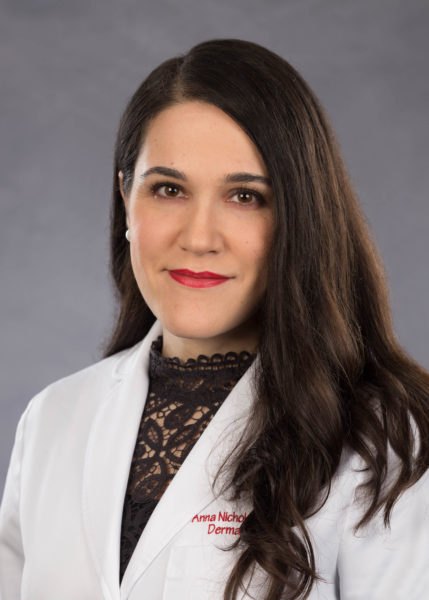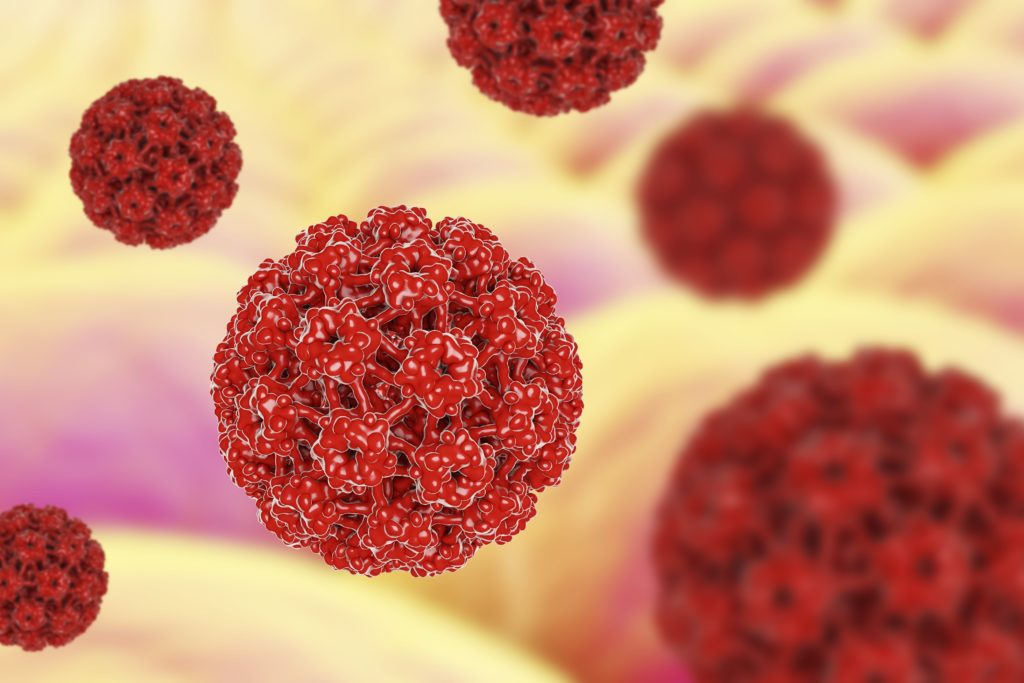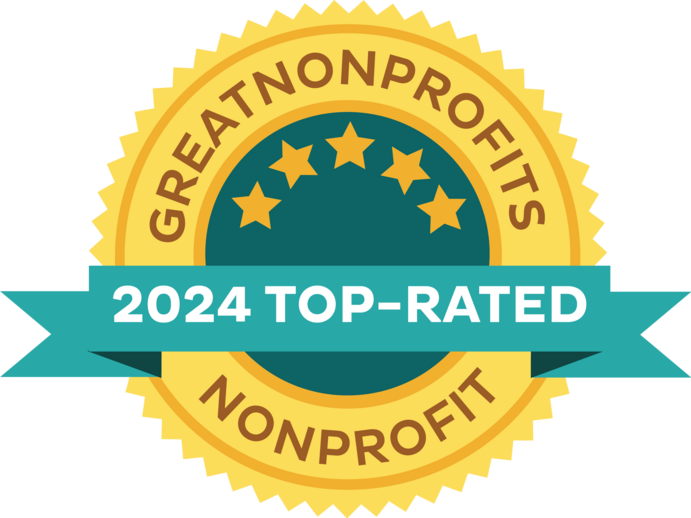The human papillomavirus, or HPV, above, may play a role in the development of some squamous cell carcinomas of the skin (SCCs). One of our past Research Grant awardees, Anna Nichols, MD, PhD, is determined to find out how and why. The research she started in 2018 could have lasting impact on patients’ lives.
By Julia Langer

Anna Nichols, MD, PhD, is preparing to publish more groundbreaking work on treating cutaneous SCCs with the HPV vaccine. She sees each cured patient as a major win.
A passion for her patients shines through even in a brief phone call with Anna Nichols, MD, PhD. After finally finding a way to resolve multiple, recurrent skin cancers for a patient she had gotten to know well, she shared that the patient recently broke down and cried in a clinic at the University of Miami, where Dr. Nichols is an assistant professor of dermatology.
This was not the first patient with difficult-to-treat tumors whose life has been changed in Dr. Nichols’ care. That honor goes to a now 103-year-old woman who came to the doctor with multiple tumors on her right leg. Dr. Nichols, who is also co-director of the Dermatology Clinical Trials Unit and the High-Risk Skin Cancer Clinic, treated the woman, who has remained cancer-free for five years.
What finally seemed to work for these patients’ squamous cell carcinomas of the skin (SCCs) was a series of injections of Gardasil 9, one of the vaccines that prevents infection with certain types of human papillomavirus, or HPV.
Viral Connection
Researchers have been gathering evidence on an association between HPV and SCC, the second most common type of skin cancer, for more than two decades. Some SCCs test positive for HPV, which may suggest that the virus plays a role in the development of these skin cancers, though how it does this is still unknown.
Before she applied for a Skin Cancer Foundation Research Grant in 2018, Dr. Nichols and her team showed that Gardasil was effective in preventing new skin cancers in some patients. But she wanted to test the vaccine as a treatment. With the help of the Research Grant award, she could. And it worked.
Dr. Nichols treated her then-97-year-old patient with a combination of systemic and intratumoral Gardasil 9. The patient was not a good candidate for surgery or radiation due to her age and the number of large tumors on her leg. Her response was the best-case scenario; the patient has not had a recurrence in over five years. Dr. Nichols and her collaborators have successfully treated multiple patients with Gardasil 9, and they are currently preparing three manuscripts to summarize their results.
Research Expands
In addition to treating her patients, Dr. Nichols has been busy trying to understand why this treatment works and which patients could benefit most from it. The methods currently used to identify HPV only detect a subset of the more than 200 types of the virus. “We haven’t been able to look at the full picture yet,” Dr. Nichols says. “It’s possible that only SCCs that test positive for HPV would respond to this treatment, but we can’t know for sure because of our inability to detect all types of HPV.”
Recently, however, Dr. Nichols began a partnership with a lab at the CDC headed by Elizabeth Unger, MD, PhD, to tackle this problem. Dr. Unger’s group has developed what Dr. Nichols calls a “powerful” method that detects all known types of HPV, which may help answer fundamental questions about HPV and skin cancer. She’s excited to send samples from the tumors of patients who already responded to Gardasil 9 treatments and to determine if HPV was present before treatment and eliminated after.
Dr. Nichols also wants to look at precancers, superficial SCCs and invasive SCCs in healthy and immunocompromised patients using Dr. Unger’s detection methods. “In some tumors, HPV may initiate tumor growth but may not be necessary to maintain growth,” she says. “But a lot of what we know and assume about the role of HPV in skin cancer is based on studies where HPV has been detected with less comprehensive methods.”
She is careful to whom she offers the treatment, since it is an “off-label” use of Gardasil 9. Her team’s long-term goals are to understand how HPV impacts tumor development, how the Gardasil 9 vaccine affects the local and systemic immune system to clear tumors and to determine which patients would be most likely to benefit. “This therapy won’t replace Mohs or other surgical options,” she says, but “for a carefully selected patient who is a poor surgical candidate it could be a very powerful tool in the toolbox.”
The Skin Cancer Foundation Research Grant “seed money” started the ball rolling on Dr. Nichols’ research, and she is grateful. Even with her infectious enthusiasm for the projects that have spun from it, she remains focused on her patients. “Regardless of the mechanism, it works in some patients, and our results so far have been amazing,” she says. “I often wake up thinking about it and go to bed thinking about it.”






